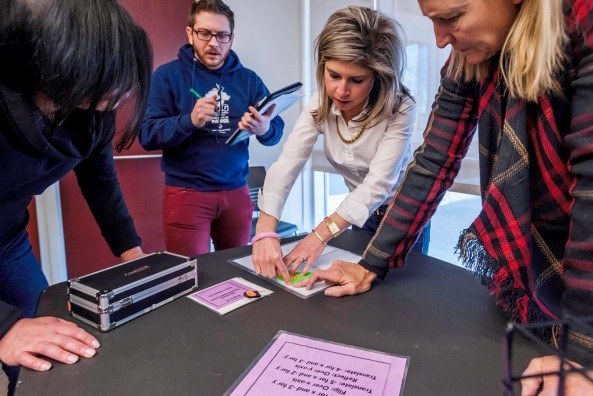May 22, 2017
As a meteorology professor at a community college in southern California, I have students struggling with abstract, but important, concepts of the physical processes and impacts of weather and climate. Students at community colleges often lack skills and motivation to learn fundamental STEM-related principles. Because of global warming, it has never been more imperative to understand the mechanisms behind weather and climate, even in southern California where the weather is generally mild and not so exciting. I wanted to find a better way for students to learn the basic concepts of the atmosphere and become engaged with the implications of global climate change. Therefore, as part of my dissertation research, I investigated the impact of dialogue-based group instruction on student learning and engagement in community college meteorology courses. I compared one part of a course that used Dialogue Education (dialogue-based group learning) to another course that only used lecture methods. The main student learning objectives were extreme weather (e.g., California’s multi-year drought) and the effects of climate change. For both courses and groups of students, I used pre/post tests and surveys to collect quantitative and qualitative data.

My main findings are summarized below:
- Higher test scores for the dialogue students. Each question that assessed learning had a higher score for the dialogue group that was statistically significant (95% confidence interval) compared to the lecture group.
- Enhanced perceived learning and application of knowledge for the dialogue students. The survey questions about perceived learning and application of content also exhibited higher scores that were statistically significant for the dialogue group.
- Comments from dialogue students supported the quantitative results. The qualitative portion of the survey questions supported the quantitative results and showed that the dialogue students could remember more concepts and apply these concepts to their lives.
- Dialogue students were more engaged. Three out of the five engagement-related survey questions revealed statistically significantly higher scores for the dialogue students. The qualitative data also supported increased engagement for these students.
- Dialogue students were more interested in learning about the weather. Interest in specific meteorological topics did not change significantly for either group of students; however, dialogue students exhibited a higher interest in learning about meteorology.
- Dialogue students found more meaning in applying meteorology to their lives. Neither group found the learning events markedly meaningful, although more students from the dialogue group found pronounced meaning centered on applying meteorological knowledge to their lives.
Overall, active engagement in the dialogue approach allowed students to become absorbed and interested in learning about the weather. This enhanced engagement most likely contributed to the resulting higher learning. These results indicate that dialogue education has a great potential for helping students learn meteorology and other STEM disciplines. Dialogue education can help students become better-informed citizens in a world with a changing climate.
For more details, check out my dissertation titled: “Exploring Meteorology Education in Community College: Lecture-Based Instruction and Dialogue-Based Group Learning.”
What research have you done or read that other readers may be interested in reading and knowing about?
* * * * * *
Jason P. Finley (FinleyJP@piercecollege.edu) is an Associate Professor of Geography and Meteorology at Los Angeles Pierce College in Woodland Hills, CA. He received his Ph.D. in Adult Learning and Development from Lesley University in 2016.



